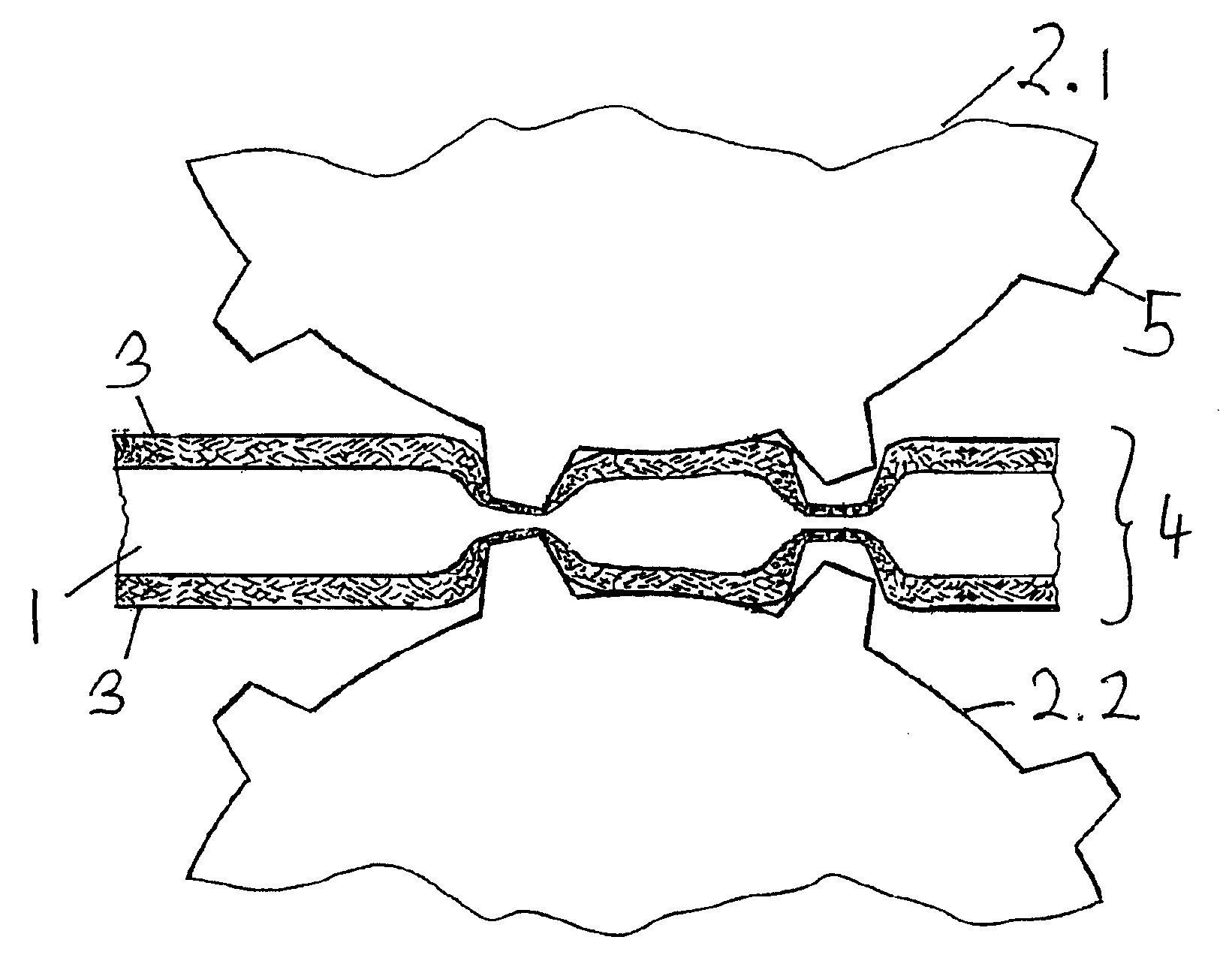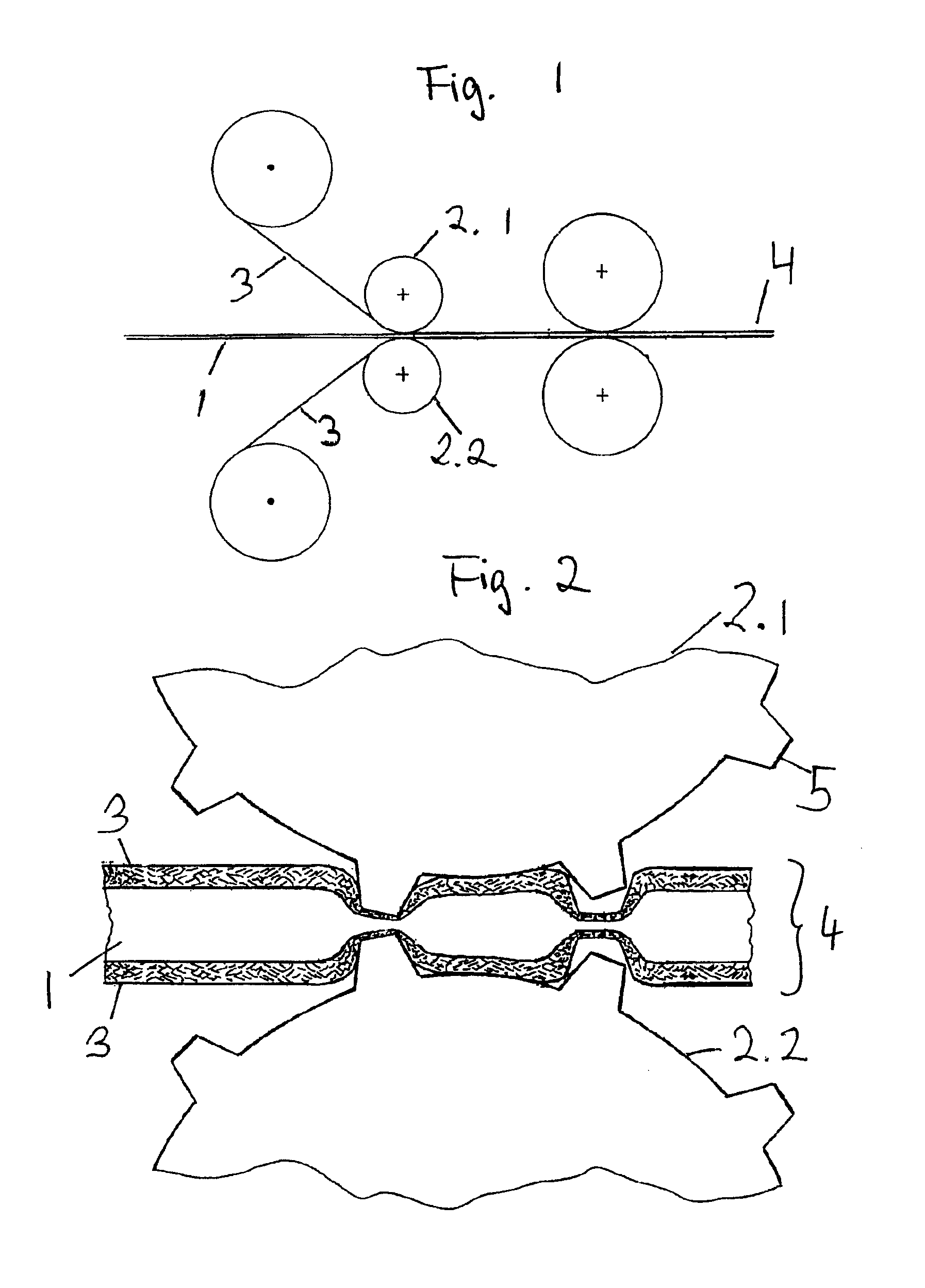Absorbent fiber web
a fiber web and absorbent technology, applied in the field of absorbent fiber webs, can solve the problems of disadvantageous purified fiber webs, and achieve the effect of peeling effect on the skin
- Summary
- Abstract
- Description
- Claims
- Application Information
AI Technical Summary
Benefits of technology
Problems solved by technology
Method used
Image
Examples
Embodiment Construction
[0021]In FIG. 1 in a schematic sequence an arrangement of cylinders and rollers is illustrated with which the absorbent fiber web according to the invention can be produced. The manufacturing process begins with cellulose fibers that, as fluff pulp, preferably of dry wood pulp are individualized by means of hammer mills. A layer of randomly laid fibers is placed onto a screen conveyor belt, not illustrated here, onto the nano nonwoven and is conveyed to a first calander cylinder pair. Between the calander rollers a randomly laid cellulose fiber layer is compressed to a loose nonwoven with minimal density and tear strength. The compressed and compacted nonwoven of randomly laid fibers represents the base layer 1 of the fiber web according to the invention. This compacted base layer 1 is conveyed to a calander cylinder pair 2.1 and 2.2. Before entering the calander rollers 2.1 and 2.2, a nano nonwoven or film 3 is placed from above. In another embodiment the lower nano nonwoven 3 is s...
PUM
 Login to View More
Login to View More Abstract
Description
Claims
Application Information
 Login to View More
Login to View More - R&D
- Intellectual Property
- Life Sciences
- Materials
- Tech Scout
- Unparalleled Data Quality
- Higher Quality Content
- 60% Fewer Hallucinations
Browse by: Latest US Patents, China's latest patents, Technical Efficacy Thesaurus, Application Domain, Technology Topic, Popular Technical Reports.
© 2025 PatSnap. All rights reserved.Legal|Privacy policy|Modern Slavery Act Transparency Statement|Sitemap|About US| Contact US: help@patsnap.com


